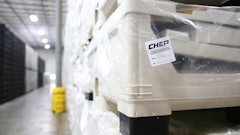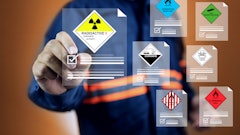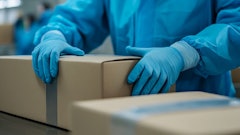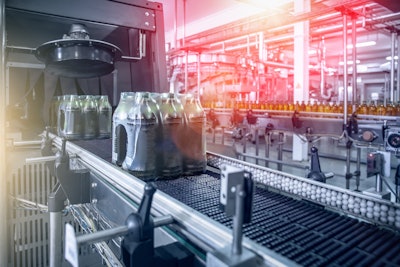
It can no longer be denied that consumers are changing the way they interact with the companies and brands they do business with. The global consumer is more health and eco-conscious than ever, and they increasingly demand that the products they purchase and consume match their desire to minimize their environmental footprint.
For supply chain executives, plastic packaging has become harder to defend. As an inexpensive way to preserve, insulate and cushion products in transit, it’s obvious why the world originally got hooked on fossil fuel-derived plastic. But we now know the truth about plastics: it’s the junk food of single-use packaging materials, and now we’re paying a hard price for our gluttony.
Today more than 40% of plastics used worldwide go into packaging. As a result, our landfills and oceans overflow with a pollutant that will never biodegrade, instead breaking into microplastic particles. Increasingly, chemicals found in consumer plastics have been linked to a range of health disorders and causes of early death.
As e-commerce continues to increase its market share of overall retail sales, packaging often becomes the first physical interaction the consumer has with a brand. As such, the unboxing experience has never been more important, and is critical to brands’ efforts to show consumers they share the same values. Anyone who has ordered products online has probably had the unpleasant experience of opening a box filled with an over-abundance of plastic that is not curbside recyclable and is likely to end up in a landfill – or the ocean, where 14 million tons of plastic end up every year.
Consumers are demanding change and are calling on brands to do better. A new global survey conducted by The Harris Poll on behalf of our company, Ranpak, shows that consumers now prefer paper to plastic packaging by large margins. In a poll of more than 2,000 adults from the U.S., France, Germany, Japan and the U.K., about 80% expressed a preference for more brands to use paper to replace plastic.
Consumers also make it clear that this preference factors in their buying decisions. Across the five countries, between 66% and 81% of consumers said they would be more likely to purchase again from brands that ship sustainably — using paper packaging and an appropriately sized box — than those who do not. These trends are only accelerating. Almost two thirds of Americans said they plan to do more online shopping in 2022 than last year.
The survey results underscore a significant opportunity for brands to use sustainable packaging to build long-term consumer loyalty and drive repeat ordering. While a significant number of companies have committed to reducing their plastic waste, many others have not. In a market often driven by ESG concerns and initiatives, sustainable packaging represents a smart and attainable asset to offer. Investors are demanding better environmental stewardship and reduced carbon emissions from the companies in their portfolio.
Supply chain leaders can effect change
Therein lies the opportunity. The supply chain already represents an area of focus, as disruptions during the COVID-19 pandemic have forced companies to reevaluate every aspect of their operations. Making supply chains more robust has been an especially high-profile aspect of these overhauls as product shortages and inflation rattle Americans more than they have in decades.
Packaging is the next smart step in the reinvention of our supply chains. And the good news for companies is that switching from plastic to paper can strengthen their supply chains while improving their environmental record.
Paper is one of the most sustainable packaging materials. Made from renewable resources, it is biodegradable and easily recycled. It’s also good for the bottom line, as it outperforms many in-the-box product protection alternatives on a total cost of ownership basis. The economic advantages of paper versus alternatives increases when one’s considers indirect costs such as handling and storage, employee safety, machine downtime, and facility cleanup.
Paper, of course, is not a new technology, but the increased urgency of finding a plastic replacement has thrown a spotlight on its previously overlooked benefits as a packaging material. For example, in the massive, $7.5 trillion global market for perishable food, paper consistently matches or outperforms plastic at ensuring food and beverages arrive intact, at the right temperature, and safe for consumption. Paper’s proven use cases include as an insulator for applications from coffee sleeves to the high voltage power cables on submarines.
In a series of tests, Ranpak engineers found paper to be competitive with expanded polystyrene (sometimes known by the brand name Styrofoam) and a plastic bubble pouch at keeping products cool. Companies needn’t compromise since it’s possible to develop industrial and consumer-facing cold chain solutions leveraging the power of 100% sustainable, biodegradable paper.
As companies weigh big decisions like switching from bubble wrap to paper, it’s worth considering that they have far-reaching consequences. For example, while both paper and bubble wrap work as protective packaging, bubble wrap’s volume is mostly air so it’s far less efficient and more expensive to transport than tightly wrapped paper, which offers similar protection with a smaller profile. Making the switch not only replaces a dirty packaging material with a clean one, it improves a companies’ emissions profile by consolidating space in transport, another point of pride to share with customers, driving future growth.
This transition from “junk” packaging to more sustainable formats has the potential to appeal to nearly all stakeholders. It’s through virtuous circles like these that sustainable paper packaging can delight your customers, please investors and grow your bottom line, all while doing what’s right for the planet. In the case of single-use packaging, doing good for the environment is also good for the bottom line.


![Pros To Know 2026 [color]](https://img.sdcexec.com/mindful/acbm/workspaces/default/uploads/2025/08/prostoknow-2026-color.mduFvhpgMk.png?auto=format%2Ccompress&bg=fff&fill-color=fff&fit=fill&h=100&q=70&w=100)




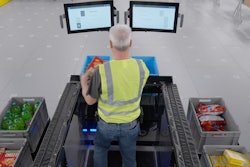
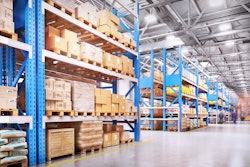

![Pros To Know 2026 [color]](https://img.sdcexec.com/mindful/acbm/workspaces/default/uploads/2025/08/prostoknow-2026-color.mduFvhpgMk.png?ar=16%3A9&auto=format%2Ccompress&bg=fff&fill-color=fff&fit=fill&h=135&q=70&w=240)


